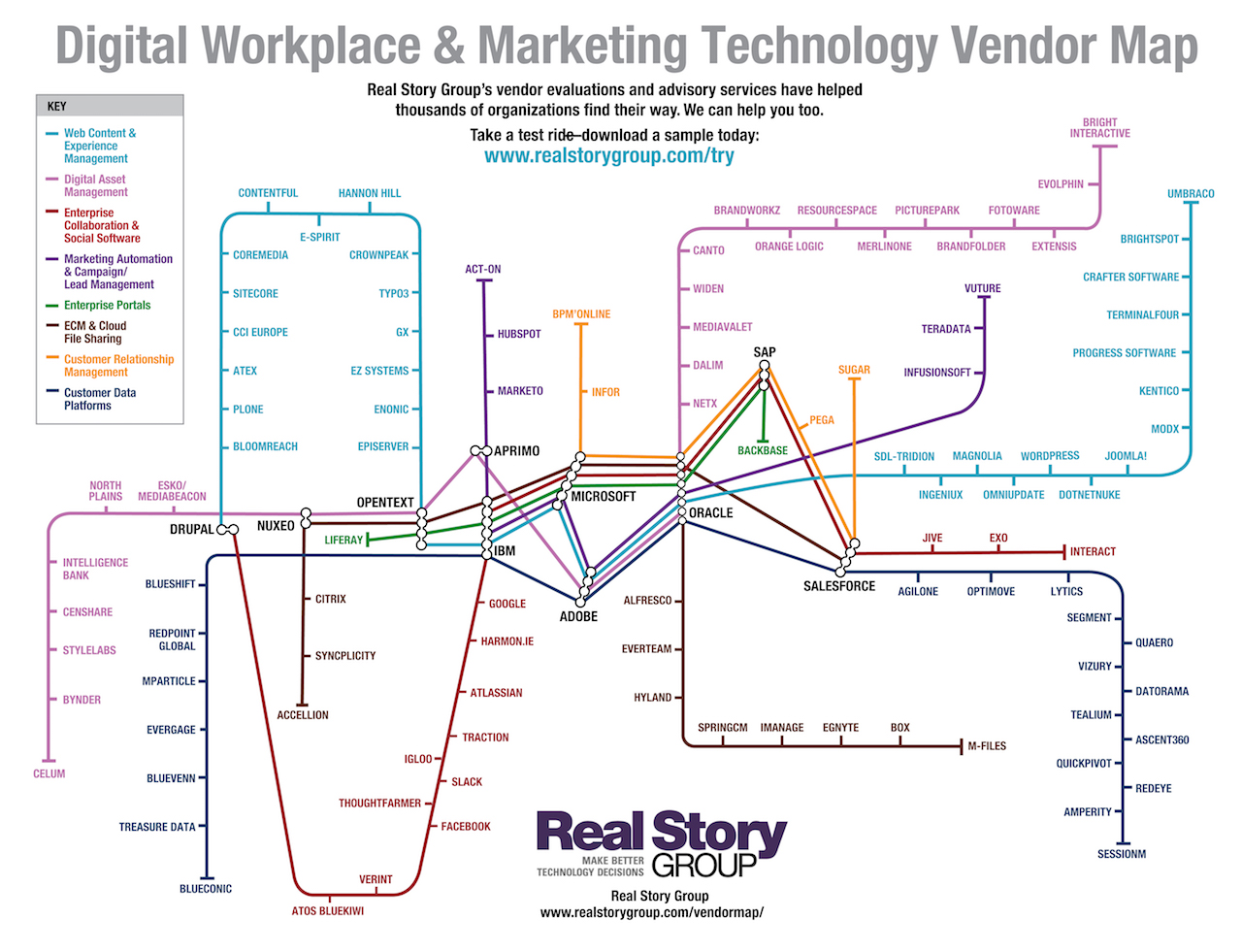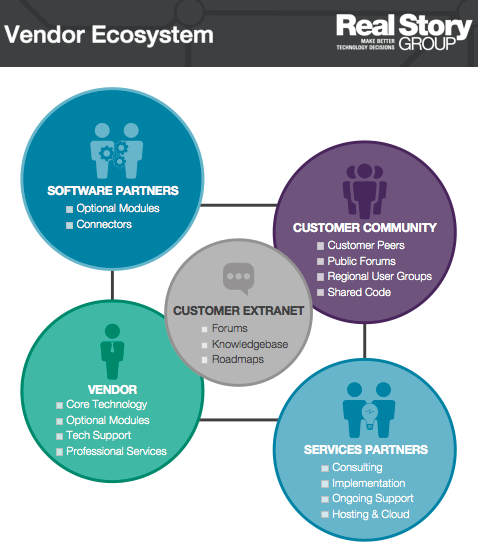Challenge of Scale, Part 3 - Social and Collaboration Platforms
This is the latest in our series of challenges for the enterprise at major scale.
As you might expect, there are some specific challenges for large, diversified enterprises trying to roll out Enterprise 2.0 solutions.
The reason for this is that nearly all the platforms and products we evaluate were designed initially for departmental usage, and often don't anticipate the kinds of demands that get placed on them at scale.
Let's do a short run-down of key issues, and then I'll conclude with some advice.
Application Diversity
Larger enterprises must address multiple diverse use cases for collaboration and social networking, ranging from knowledgebase management, to ideation and innovation, to project collaboration, to enterprise conversation, and more.
At scale, the typical enterprise will need multiple tools -- often from different vendors -- to adequately fulfill diverse goals. As our Enterprise Collaboration & Social Software subscribers know, these different tools often bring quite different architectures, which can be difficult to reconcile, let alone integrate for a coherent user experience. Consider for example, the differences between Yammer and SharePoint -- now offered nominally by the same vendor, but quite different in approach, model, and underlying technology.
Scaling Pilots in Large Enterprises
When it comes to social and collaboration, pilot projects may not provide as accurate predictor of success or failure as they might with other technologies. I'm not suggesting that pilots aren't needed -- just pointing out that customers often find that a social project deemed successful in one business unit may fail to take off altogether in another business unit. Pilots for social projects do not always provide the recipe for scaling across the enterprise.
Your challenge here is partly a reflection of my previous point: that different groups of users have differing use cases, and one-size does not fit all. Careful analysis and rolling, iterative pilots are your friends here.
Getting to real business value also helps you deal with the related "sustainability problem," which arises when users initially adopt social software because of novelty or because of the buzz generated by the marketing blitz at launch, but stop using the platform when it shows no practical business value.
Sometimes, though, you may just need patience and flexibility. Those managing these projects in multinational organizations in particular should recognize that cultural norms around sharing and recognition will vary widely. You may need to take subtler approaches to adoption and business process integration.
User Management and Privacy
User management for most platforms, most of the time, means: "we authenticate via your LDAP/Active Directory." Fine. But what about provisioning (and restricting) access to certain communities or project teams? Most tools in this marketplace still have you do that one email address at a time. This doesn't scale well for the complex enterprise.
And we all know privacy norms and laws present difficult challenges across national boundaries. With rare exceptions, you have to implement kludgey work-arounds or manually set broad usage limits to some features in some countries. To be sure, this is not a simple problem to solve with technology alone, but you will struggle to find much in terms of a leg-up here.
Global Performance and Effectiveness
Issues of privacy are really just reflective of the broader challenges of Enterprise 2.0 in multinational environments. For example, many tools ship with an English-only interface. That may not go over well. Some tools favor one mobile platform over another, or assume that all employees have either an Android or an iOS device; again, not necessarily realistic in many parts of the world.
Application performance also becomes a near-endemic challenge in many global enterprises. A single or small handful of deployments may not address latency, especially when some offices may have access to only limited bandwidth. Most platforms, including SharePoint, require specialized voodoo skills for reliable replication -- even if you can afford all the licensing.
Meanwhile, most SaaS vendors have a limited geographic footprints, though this is improving a bit with greater adoption of true Cloud infrastructures.
What geography is particularly underserved? You got it: Asia-Pac...
Signal to Noise
Paradoxically, achieving scale in some instances may actually reduce usage. In large-scale implementations, for example, separating signal from noise in burgeoning activity streams can become prohibitively difficult for most users. They respond by retreating.
A savvy architect will look for solutions that put signals in context of place and activity, and allow employees to filter activity effectively.
Business Process Integration
That issue of context lies at the core of why most social projects are nowhere close to claiming enterprise-wide adoption, but remain single-use case or single department implementations.
To meaningfully include social in business routines and workflows, you have to first identify which processes can benefit from being "socialized" and then integrate them with existing systems that run those processes.
On this journey, given the current state of social software, you will run into many challenges, like a dearth of integration standards, and poor thought given to service consumption (as opposed to service production) among major platform vendors like IBM, Microsoft, and Oracle.
As an enterprise architect, however, you want to keep pushing here. Your colleagues want to socialize their broader digital workplace environment as much as (or more than) they want to participate in specialized communities.
Setting the Right Expectations
Like any marketplace, there's no ideal Enterprise 2.0 platform that will address all these problems. Some vendors are making strides in some areas, but many customers still experience the dreaded "enterprise surprise" when departmental platforms don't scale. For a detailed run-down on where major platforms do and don't excel, consult our Enterprise Collaboration & Social Software evaluation research.
If you are a leader within a large enterprise, the key thing is to set your colleagues' expectations about what's possible today. The sociology of Enterprise 2.0 is hard enough already that you don't want to over-promise on the technology side.







